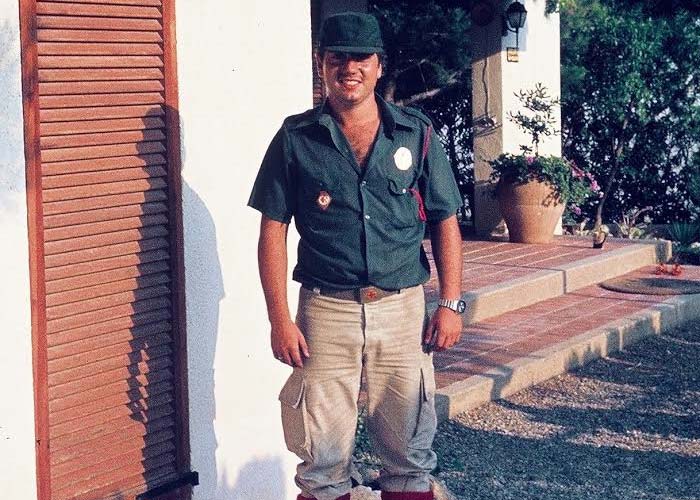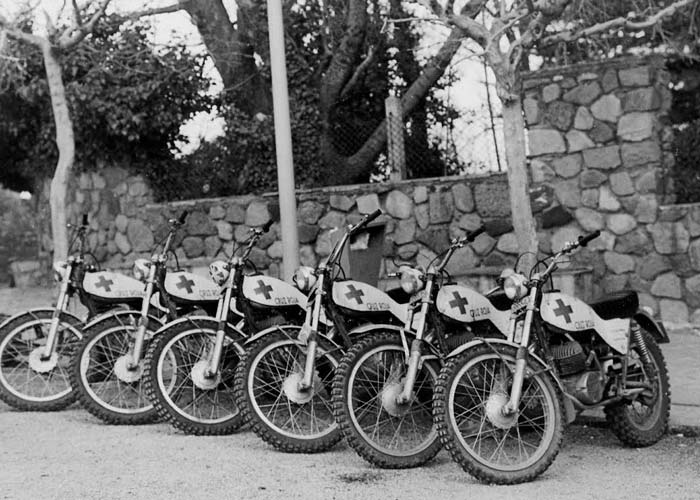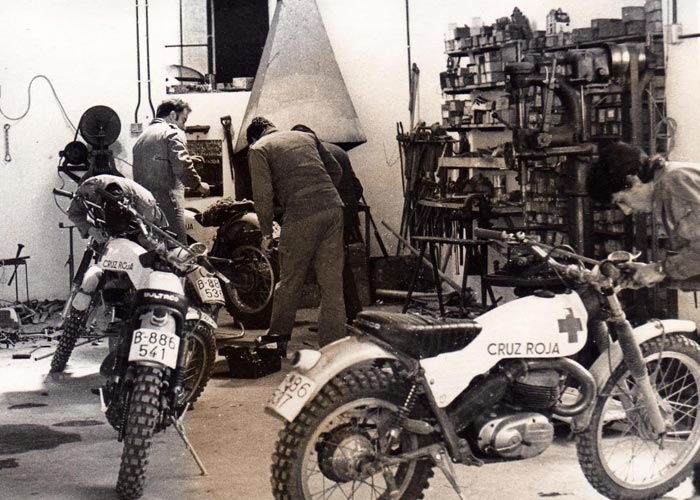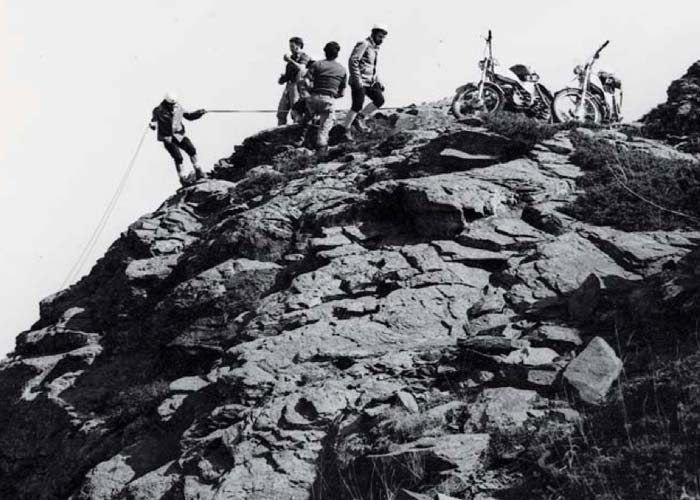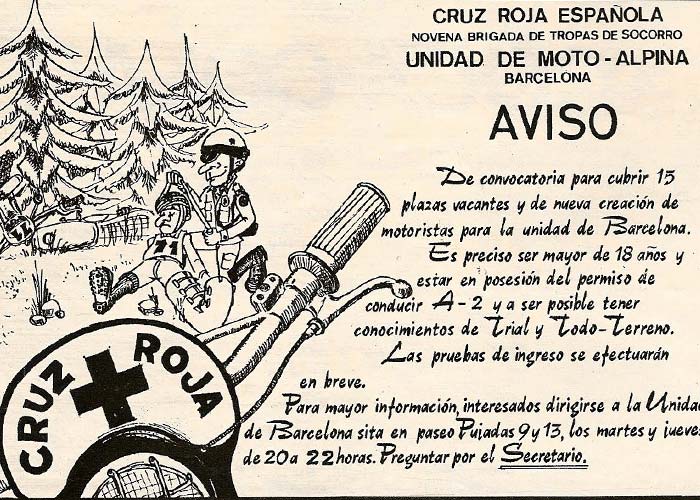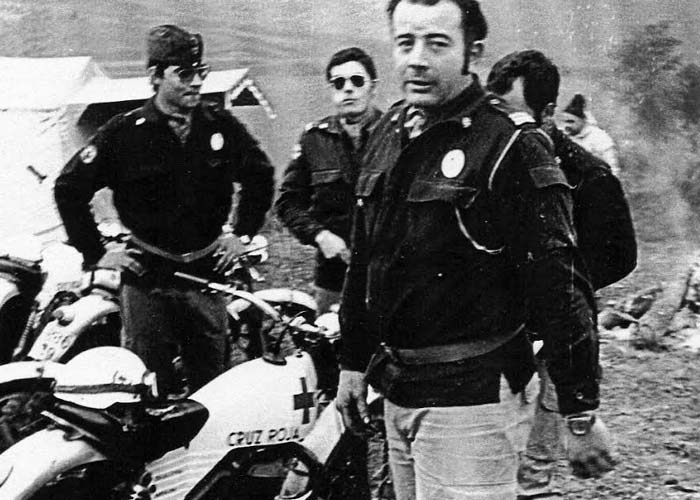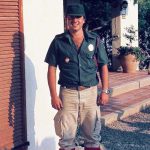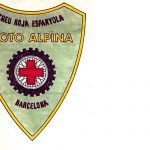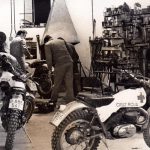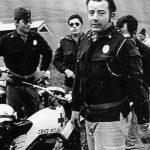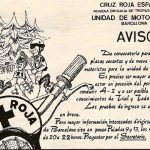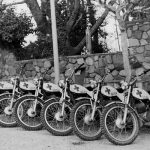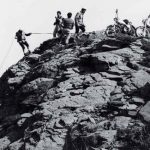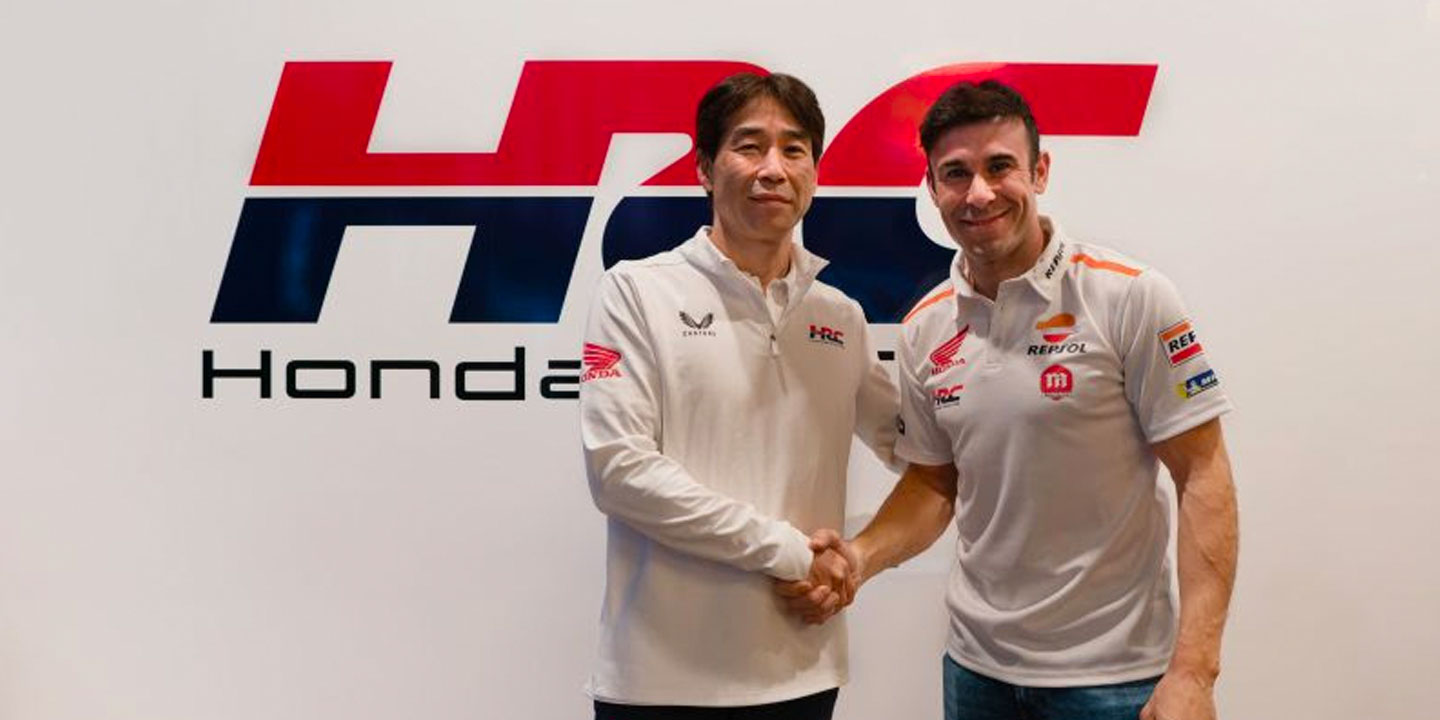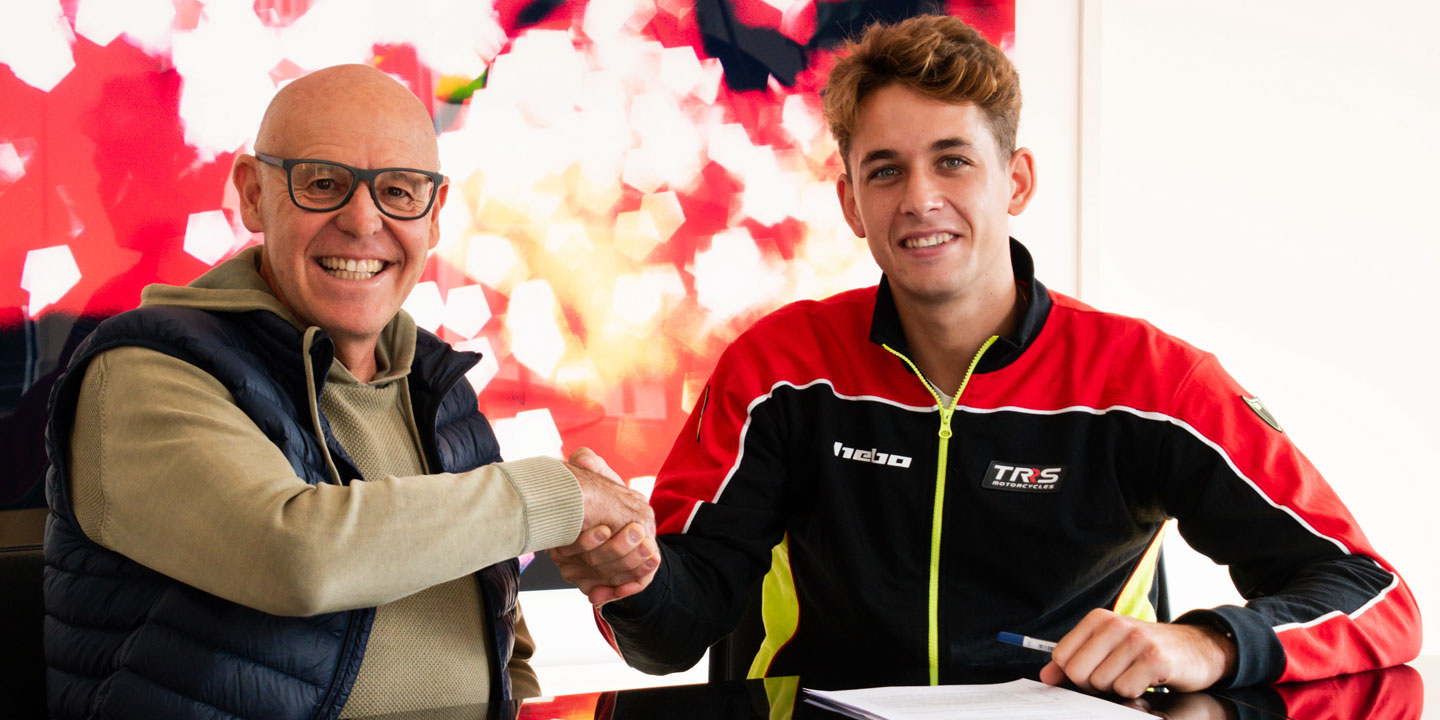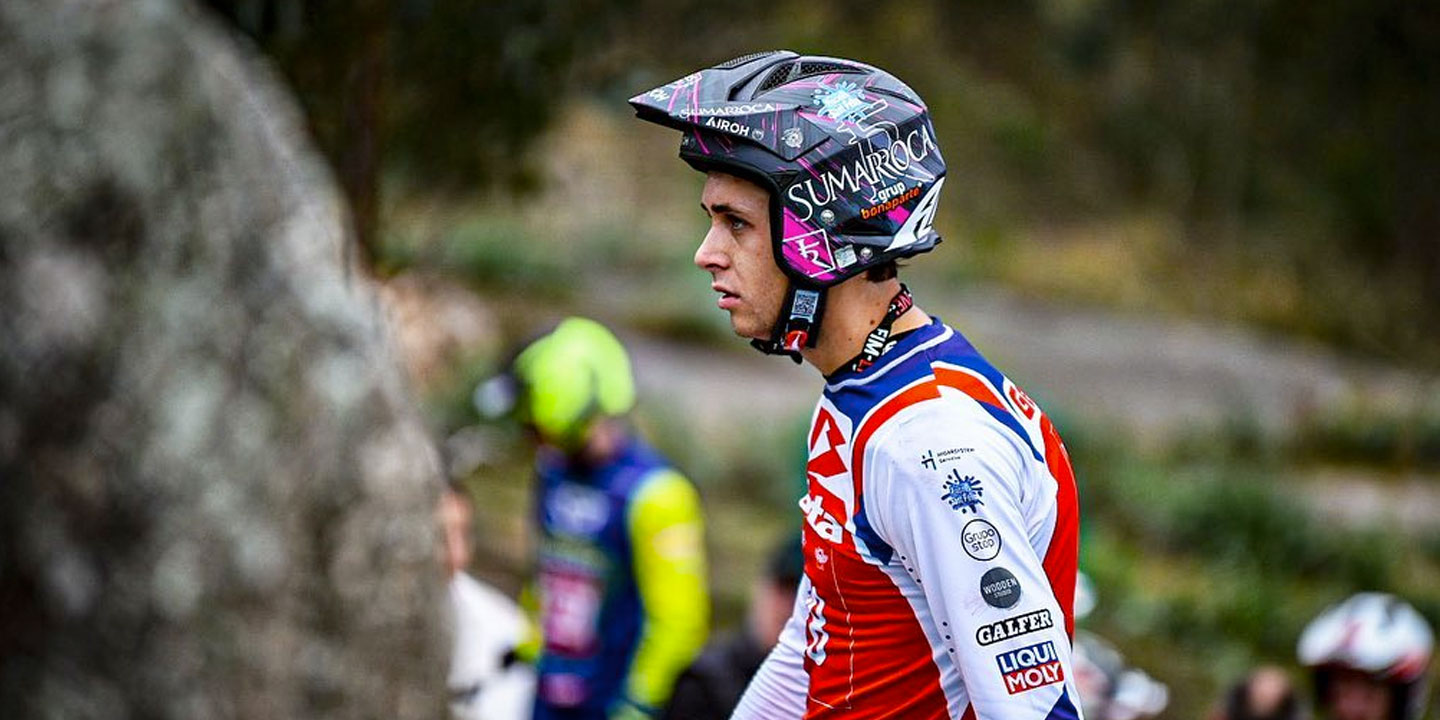Very good areas!
To explain how I came to the Red Cross Alpine Bike Unit, I have to do a bit of personal history.
I had come of age, I had a job in the family business, I had a girlfriend for a long time, I even had an apartment to live in, but there was an obstacle in our lives, that the youngest who read this cannot even imagine what it would “bother” us: “THE MILITARY”.
To get rid of it as soon as possible, I decided to join voluntarily; Although it was more time of military service, he won, since at just 20 years old he would already be discharged, and if he had waited until the mandatory age, he would have barely entered the ranks at 20 years old.
I chose to volunteer for the Red Cross in Barcelona. They had a military unit where they would serve for 20 months, but in order to become part of this military unit, it was necessary to first take several steps.
The first was to take a three-month lifeguard course. I did it in Pujades Street, the headquarters of the Spanish Red Cross in Barcelona.
The second, to be part of one of the volunteer units that the Red Cross had at this headquarters for six months: social services, beaches, highways and roads, telecommunications, offices, ambulances, underwater activities, the alpine motorbike, etc.
Obviously, I chose the Alpine Motorcycle Unit. I had the cleats in my head for a long time and this was one more way to continue practicing my favorite sport. They gave me some tests, I passed them and they accepted me.
It is true that the first intention was only to comply with the necessary procedures to access the Military Unit, but it is also true that in the Moto Alpina I felt at home: Manel Fabregat (the “master”), Isidre Montferrer and Isabel, Manel Guzman, Jordi González “Pastora”, etc. treated me as one more, despite the age differences. I had a great time and also collaborated in social services with my motorcycle hobbies: speed, motocross, enduro (formerly off-road) and, above all, trial.
I attended countless events and I remember many anecdotes. Perhaps the last service that is clearest to me was an event, still remembered by many people who took part in it, I am referring to the alleged tactical “ICARO 80”, a simulation of a great catastrophe and terrorist attack carried out on 25 and 26 October 1980 at the Prat de Llobregat airport. But the six months of volunteering flew by and I had to enter for military service.
Two months of training in the recruit camp of Sant Climent Sescebes and eighteen months in the Military Unit of the Red Cross, acting as driver for Colonel Josep Sala Villa (head of the military unit), but that is another story.
At the end of the military (September 1982), I admit, I ended up fed up with soldiers, uniforms and, why not say it, the Red Cross. I never set foot again at the headquarters in Barcelona and lost all contact with its members, both volunteers, military and professionals.
But the world is a handkerchief and 20 years later, in my first participation in the 2 Days of Trial of Arinsal, I address a person from the organization, with a harsh and hoarse voice, who was familiar to me. I ask and they tell me… it’s Manel Fabregat!
Oysters! “The master” and so I was reunited with those years. From then on, everything was much easier with Facebook. Little by little we have met again to share those moments that, in my case, were brief, but that I remember with great satisfaction.
Now, with the frankness of my thoughts, I would like to share with you what the Red Cross Alpine Motorcycle Unit meant, how it was created and how it ceased to exist. For both things I have had the collaboration of Nacho Bertrán, Pep Segalés, Manel Fabregat and also former members of the same unit. I hope you like it.
To start talking about the Red Cross Alpine Bike Unit, I can’t do it without mentioning its founder: Manel Fabregat.
He was responsible for the creation in 1969 of a section of the Red Cross, which would be dedicated to covering sporting events in areas where the use of a mountain bike could be key.
The idea came about almost without realizing it because, a year earlier, Manel had experienced firsthand the dangers of having an accident in the middle of the mountain.
In his first participation in an off-road race (now enduro), in the 1968 Dos Días de Manresa, he fell down an embankment without anyone noticing, so no one worried about his search and no one noticed his absence since, in addition, no one was waiting for him at the finish line.
Manel had travelled to Manresa with the same motorbike with which he had to run the race, carrying a backpack and little else. No one accompanied him, so no family member or friend would wait for him at the finish line. He didn’t arrive at the hotel until after 10 p.m. He did it under his own power and in a sorry state from the fall, and muddy and soaked because it had been raining. He really had a hard time during the hours he was alone.
This mishap was what made him see the great dangers that riders run in the mountains if they do not have quick assistance at the time of an accident and he began to think about it, until the idea of creating a specific body of expert motorcyclists with enough medical knowledge to be able to provide effective first aid came to his mind.
At that time, Manel Fabregat was already collaborating with the Alpine company of the Red Cross Relief Troops Brigade, making rescues with bunk beds on the ski slopes, so it was not difficult for him to convince his superiors of the virtues of a corps like the one he proposed.
This is how the Red Cross Alpine Motorcycle Unit was born.
The beginnings of the Red Cross Alpine Motorcycle Brigade in 1969 were with very few means, but with a lot of will. So much so, that the corps was made up of volunteers who used their private motorcycles, cars and trailers to cover the different services. It was not until 1971 that the Red Cross authorized the purchase of several motorcycles.
It was then that Manel Fabregat got in touch with Francisco X. Bultó to propose, based on the Sherpa Kit Campeón, the design of an exclusive model for the unit. Ask for cross tires instead of trial tires, harder shocks, a wider seat, etc.
Mr. Paco Bultó accepted the proposal and 6 prototypes were created from which, subsequently, Bultaco decided to produce a series of what would be the brand’s first Trail. In addition, in homage to the brigade, they named this model the Alpina, donating several units to the company.
After some time, the Red Cross acquired and customized helmets and barbours for the staff since, as with motorcycles, the clothing was particular and specific to each one.
The number of services provided since the date of its creation is incalculable, but those that were more complex due to the circumstances do stand out. From the 6 Days of All Terrain in Guarradama in 1970, to the 6 Days of Cerdanya in 1985, through the Trial de Sant Llorenç del Munt, the Motocross of the Vallés circuit, the 24 Hours of Montjuïc, the concentration of Andorra or the mythical Los Elefantes at the Salzburgring and hired by JJ Cobas to give them technical and health assistance on the road.
All services were important, regardless of their relevance. They made the same effort, both in an international event and in any of the many local events that were held. The objective was to cover as many tests as possible, saving human lives due to the speed of the service and thanks to the fact that the motorcycles allowed them to reach the most inaccessible places sooner. It is also true that they both attended sporting events and collaborated in any type of emergency or disaster that affected civil society. For example, the floods of Cornellà in 1971, a plane crash in Montseny or the search and rescue of speleologists in the Garraf massif in 1973. Not forgetting the Tibidabo forest fire or when they had to look for people lost in the mountains. Also, more than one summer, when the volume of the races dropped, they collaborated with the Red Cross on the beaches, opening the way for ambulances on the roads full of cars, or simply carrying material from one aid station to another.
But then came the internal problems.
Around the mid-seventies, with more than 30,000 km of mountains on their backs, it was decided that motorcycles were no longer good and the fleet was renewed. Neither the Red Cross nor the Motorcycling Federation wanted to bear the costs, although the brands offered impressive discounts. There came a time when the bikes could no longer be repaired and the delicate decision was made to stop.
Offering services with material that did not inspire confidence and could be dangerous to the personal safety of volunteers was totally inadequate. Some of those bikes were recycled into road link bikes, but they were no longer useful for the mountains.
Despite all these inconveniences, the corps continued and in June 1978 they managed to increase the fleet of motorcycles. The Federation made it possible to purchase four units. For the purchase of two Frontera 250s, Bultaco donated an Alpina 250; Montesa, for the purchase of two Enduro 250 (*), gave away a Cota 348 Trail; and the “PolePosition” motorcycle club gave an Alpina, which also joined the Cota 348 that had been given away by the Isern team a few months earlier. All this, together with the achievement of an all-terrain vehicle perfectly equipped for the extraction of injured people in places difficult to access for a conventional ambulance, recovered the morale of the Moto Alpina Unit and allowed it to remain active for a few more years.
(*) With the Enduro 250 is the one with which I did the entrance tests to the Unit and the Cota 348 Trail was the one I took on more than one service.
But external problems also returned.
To sum up: the service was efficient and people/motorcycle clubs requested it, but due to an accumulation of political and economic circumstances, things went wrong. The material was not adequate, no new personnel were coming in, and the country was changing. Thus, one of the last services that were made was the 6 International Days of All-Terrain of Cerdanya in 1985, and all this thanks to the Spanish Federation (chaired by Toni López) who got them six Merlins to cover this event.
Why not recover or start up a body with similar characteristics to that one?
It is true that many years have passed since the cessation of the Relief Corps of the Spanish Red Cross (and with it the Alpine Motorcycle Unit), but I also do not want to comment on the great similarity of the Red Cross to the way of doing and undoing and the hierarchy of the army. Even if the Corps were considered, in the event of war, an Auxiliary Military Health Force, I believe, indeed, affirm it… that the Alpine Bike had a lot of Red Cross volunteers and very little of Military, in fact nothing.
That said, at a time when adventure sports are in full expansion and more and more activities are practiced in the middle of nature, it seems incredible that no one has set up something similar to what the Alpine Motorcycle Unit once was.
What’s more, you will all know that in any sporting event an ambulance must be hired to cover possible accidents and that it is difficult for the compromised situation (accident) that Manel Fabregat had to be repeated, but it is also true that on many occasions ambulances cannot reach the scene of the accident, so friends act, relatives, etc., with more good faith than means.
From my own experience as an organizer of trials through Motocat, on more than one occasion I have seen things and actions that in the 21st century cannot be allowed and would make more than one volunteer of the Alpine Motorcycle of the seventies and eighties blush.
I find it difficult to think that anyone is willing to spend their free time collaborating in actions of this kind. Civil Protection, ADF, etc. are made up of people who are not looking for financial reward and who help simply for pure personal satisfaction, but it is true that getting volunteers nowadays seems as difficult as it is improbable and this is where my doubts arise:
Why not approach it as a business?
Perhaps the only possibility for this body to rise from the ashes would be to give it a business approach. That it was an absolutely professional job, dedicated to prevention, surveillance and rescue. The most important thing is that it is a business.
With this data, it would be time to create a company designed to provide security in any of the many “outdoor” events that are held in our country.
Let those who need their services pay for them. Because only in this way would it be possible to have qualified people, the appropriate equipment and the means to keep it in perfect working condition. With this, and the corresponding obligation on the part of insurers and Federations to their motorcycle clubs, it could be enough for a body of these characteristics to be able to work again.
That’s the idea. I see it clearly!
David has provided the means to channel any comments, but if you want to make it more personalized, you will always find me at bonaigua@bonaigua-trial.com
Lots of zeros!
Victor Martin
“Bonaiguá”
Inicio / Red Cross Bultaco Alpine Motorcycle Unit
Red Cross Bultaco Alpine Motorcycle Unit
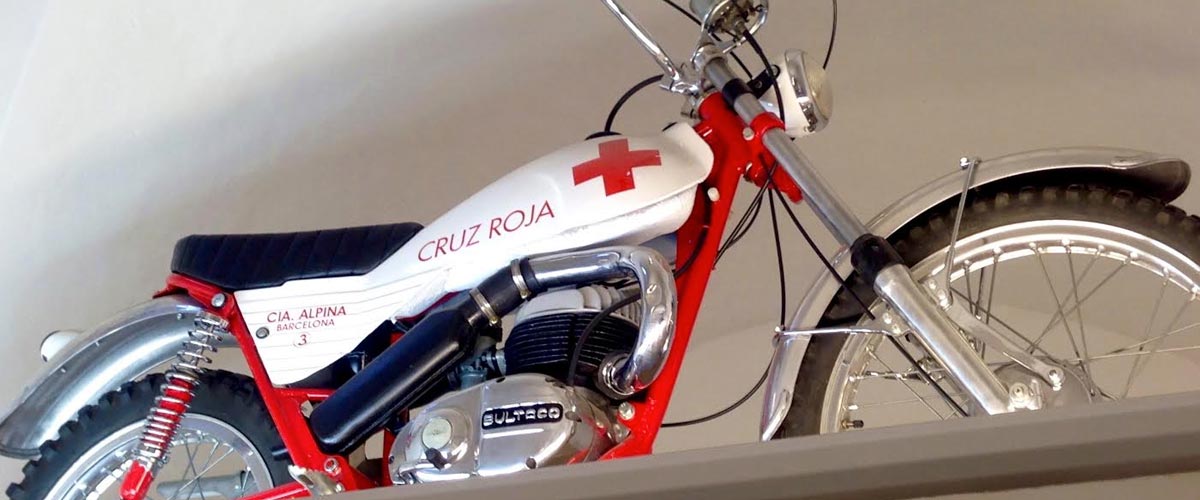
- 25/09/2015
- Trialworld
Did you like it? Share
Share on facebook
Share on twitter
Share on pinterest
Share on whatsapp
Share on email
